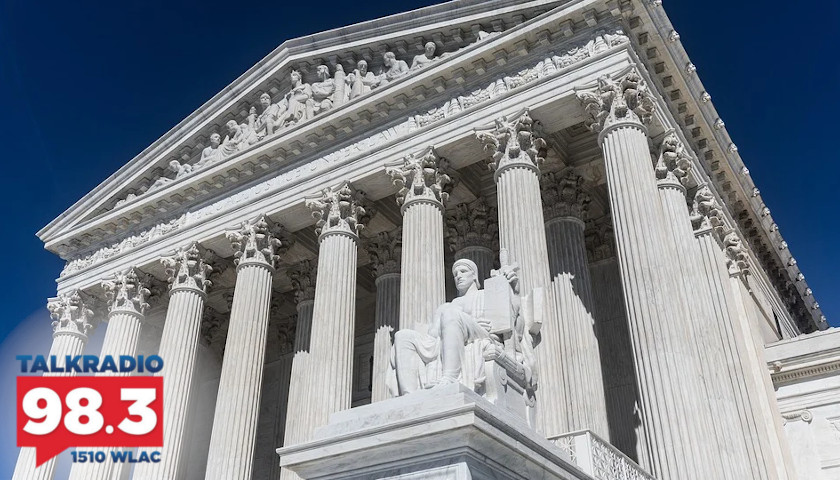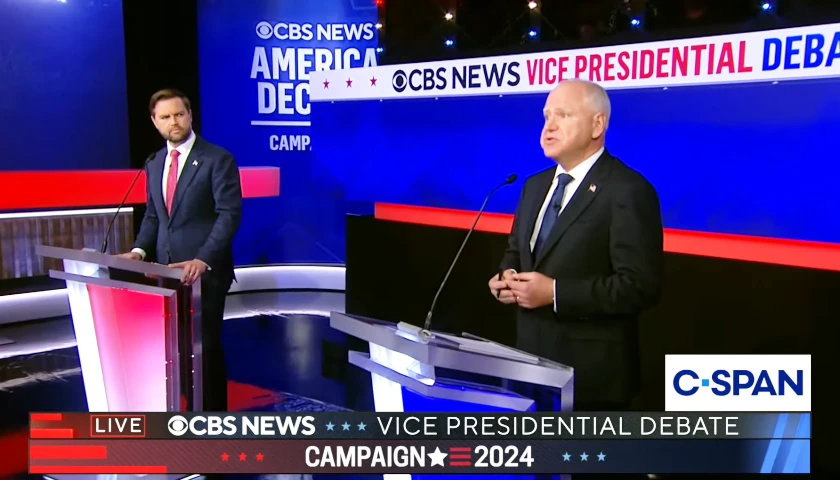Live from Music Row Monday morning on The Tennessee Star Report with Michael Patrick Leahy – broadcast on Nashville’s Talk Radio 98.3 and 1510 WLAC weekdays from 5:00 a.m. to 8:00 a.m. – host Leahy welcomed all-star panelist Crom Carmichael in-studio to discuss federal government overreach and liberal Supreme Court justices in juxtaposition to the case of Sackett v EPA.
Leahy: Two weeks from this Saturday, we will hold the 6th Annual National Constitution Bee for high school kids grades 8 through 12, and they can win educational scholarships up to $10,000 for the winner.
And so we look forward to that. I think it is timely, because it’s the first Monday in October, which means the Supreme Court is convening. There’s a new member of the Supreme Court, Justice Ketanji Brown Jackson. I do not have high hopes for her, Crom.
Carmichael: Well, we will see.
Leahy: We will see.
Carmichael: It’s difficult to have high hopes for somebody who cannot answer a question, “how do you define a woman?”
Leahy: Yes, that would be hard to have high hopes for that kind of answer. What it looks like to me – and I’d be curious to get your thoughts on this, and I guess there are a couple of cases coming up that the Supreme Court is going to decide on. But the three liberals – Elena Kagan, Sonia Sotomayor, and Ketanji Brown Jackson – all three, to me, they’re just going to be lockstep, political left-wings, folks.
Carmichael: We’ll see.
Leahy: They’re bright.
Carmichael: But we’ll see. Let’s remember that a lot of the Supreme Court decisions are decided 9-0 and 8-1. It’s surprising how many are.
Leahy: But the important ones are 6-3 or 5-4.
Carmichael: Right. That’s right. And as of right now, as of right now, the reasonable group on the Supreme Court outnumbers the unreasonable six to three.
Leahy: Yes. Some days.
Carmichael: Some days it’s five/four.
Leahy: And some days it’s four/five, depending upon what Justice Roberts had for breakfast. (Chuckles) That’s glib, and unfair to Justice Roberts.
It’s not what he had for breakfast, but it’s his calculations that sometimes stray from the judicial role and move to political.
Carmichael: This particular story that I wanted to talk about, an upcoming case, actually includes Judge Roberts, who, according to this column, and I agree, I believe that this opinion of Judge Roberts is accurate, and that is he was prescient in saying that Judge Kennedy’s writing of the case, his opinion, would create more problems than it solved.
Leahy: Former Justice Anthony Kennedy?
Carmichael: Yes.
Leahy: What’s the case?
Carmichael: The case is about the Sackett – that’s a family – versus the EPA. This case has been going on for 15 years, and …
Leahy: Is this the family that has a pond?
Carmichael: I’m going to quote from the article here. Michael and Chantell Sackett have been trying to build a home on a lot near Priest Lake, Idaho for 15 years. Soon after workers started moving dirt, the EPA and the U.S. Corps of Engineer Officials swooped in and claimed their property likely contained wetlands subject to federal regulation under the Clean Water Act.
I’m going to just quote from the article here. This was a head-scratcher. Their land contained no body of water, and the law authorizes the EPA to regulate only “navigable waters” – that’s in quotes – in interstate commerce.
EPA nonetheless ordered construction halted and threatened huge penalties if the Sacketts didn’t obtain a federal permit, which typically requires more than two years and $250,000 in consulting costs.
The EPA reasoning went like this: “The Sacketts’ lot was connected to a wetland, though it was separated by a 30-foot paved road, and that wetland was connected to a man-made ditch that was connected to a non-navigable creek that connected to Preist Lake, which was navigable. No wonder the Sacketts were dismayed.”
I just gave you the description that A was connected to B, B was connected to C, C was connected to D, and only D actually applied to the law. And so this case will now go before the Supreme Court after 15 years.
And the problem was – and as I said, Justice Kennedy wrote the opinion back in the majority of Rapanos in 2006, but it didn’t have any limiting principle to it. And Judge Roberts said “Lower courts and regulated entities would lack guidance on precisely how to read Congress’s limits on the reach of the Clean Water Act and would be left to feel their way case by case.”
Hopefully the case will be used to clarify that, if Congress said that a waterway must first of all be wet and it must be navigable for a piece of land to be regulated, hopefully, that will be the outcome.
Leahy: I have a couple of thoughts here. Number one, this is not going to be 9-0. This is going to be a 6-3 decision. I think Sonia Sotomayor, Ketanji Brown Jackson, and Elaine Kagan are all going to say, oh, yeah, they can do this. But it is ridiculous that the deep state, in the form of these bureaucrats at the EPA, overreach so much.
And I can tell you, because back in my earlier life, as you know, Crom, I worked for about a year and a half as a budget analyst at the EPA back when I was a Democrat in the late ’70s, in the Carter maladministration.
And I can tell you that, generally speaking, even back then, the bureaucrats with whom I worked thought they knew better than the average person. I experienced that.
Carmichael: Oh yes. And that was back then.
Leahy: Back then!
Carmichael: That’s 40 years.
Leahy: A long time ago.
Carmichael: 40 years later, they think even more strongly that way.
Leahy: By a factor of like 100.
Carmichael: And hundreds of thousands more of them feel that way.
Leahy: Yikes!
Listen to today’s show highlights, including this interview:
– – –
Tune in weekdays from 5:00 – 8:00 a.m. to The Tennessee Star Report with Michael Patrick Leahy on Talk Radio 98.3 FM WLAC 1510. Listen online at iHeart Radio.





